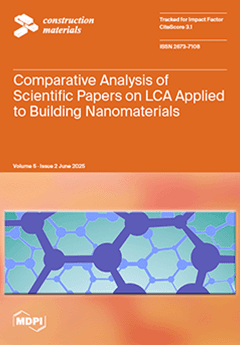Recent global strategies highlight the urgency of addressing greenhouse gas (GHG) emissions, particularly CO
2 from energy-intensive industries such as cement production. Studies show that the cement industry contributes around 8% of the global CO
2 emissions, emphasizing the need for innovative and
[...] Read more.
Recent global strategies highlight the urgency of addressing greenhouse gas (GHG) emissions, particularly CO
2 from energy-intensive industries such as cement production. Studies show that the cement industry contributes around 8% of the global CO
2 emissions, emphasizing the need for innovative and structural mitigation strategies. While advancements in carbon capture technologies, LC3 cement, alternative raw materials, and renewable energy integration are critical for achieving the net zero emissions (NZEs) goal, the challenge lies in having a structured and comprehensive approach for systematically categorizing, prioritizing, and assessing various CO
2 improvement measures within cement plants. To address this gap, this study introduces a structured assessment model designed to evaluate and rate proposed CO
2 improvement measures based on their alignment with the global NZE targets and plant-specific milestones, providing an overall cement plant performance score. The assessment tool developed in this study provides a quantitative scoring system for assessing the implementation level and impact of various CO
2 improvement measures within cement plants. The framework integrates the cleaner production concept and the 5Cs approach to the decarbonization of the cement industry, offering a systematic yet flexible method for cement industry decarbonization. To validate the assessment tool, two cement plants with different production scales and located at different geographical locations were analyzed. Plant A achieved an overall performance score of 3.315, while plant B scored 3.68. The assessment identified a potential CO
2 reduction of 20–30% through targeted improvements, highlighting that even well-established cement plants have opportunities for emissions reduction and efficiency enhancement. This study advances existing assessment methodologies by providing an adaptable, data-driven, systematic, and scalable tool that enhances decision-making, strategic modifications, and resource allocation for achieving NZE targets. Additionally, this assessment tool bridges the gap between global targets and plant-level implementation, ensuring effective transition towards sustainability in the cement industry.
Full article





